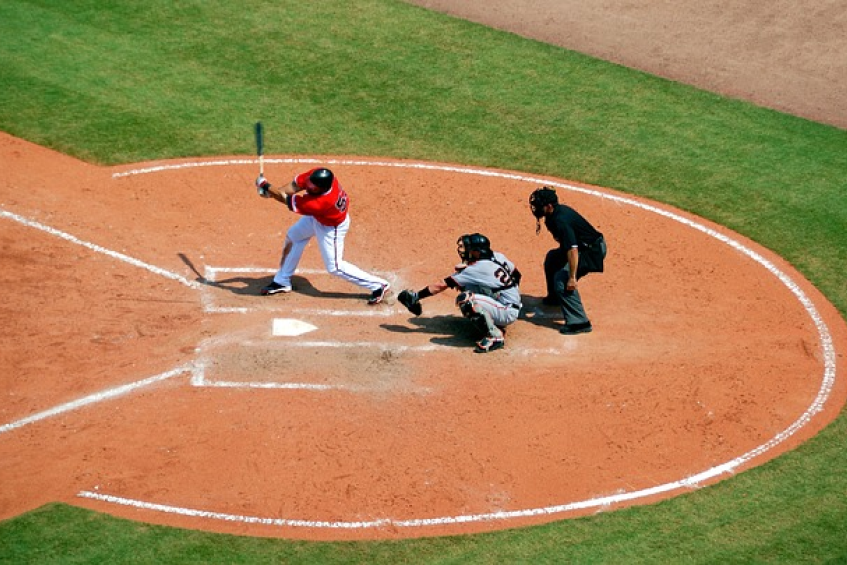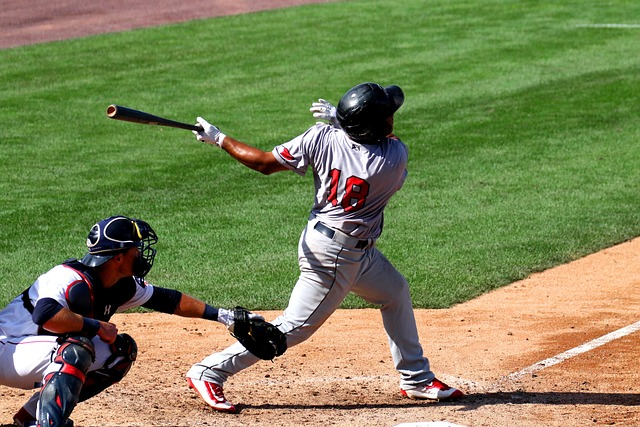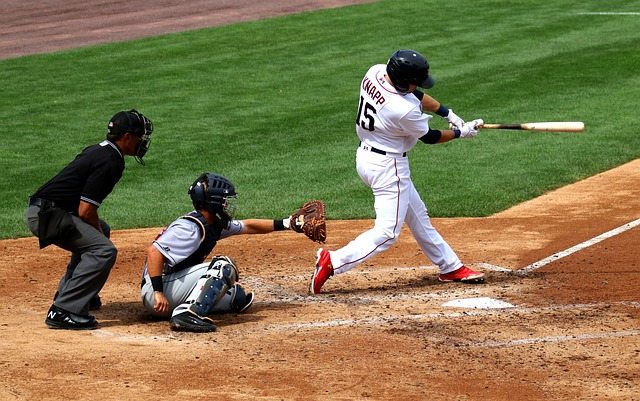
As the sun sets on a warm summer day and the stadium lights come to life, it signals the start of a special event in the heart of the Major League Baseball (MLB) All-Star week - the All-Star Futures Game. The brainchild of Jimmie Lee Solomon, a former Executive Vice President of Baseball Operations for MLB, the Futures Game is much more than just an exhibition match. It's a grand stage that brings together minor league players from across the country, offering them a chance to shine under the spotlight.
Imagine a canvas where the future of MLB is painted in broad, bold strokes - that's the All-Star Futures Game for you. It showcases prospects from the American and National Leagues, with representation from all 30 MLB organizations, celebrating the rich tapestry of talent present in baseball's ranks.
In this blog post, we'll delve into the evolution, unique format, and the impact of the All-Star Futures Game. We'll revisit memorable games and explore the journeys of past stars who started their trajectory towards greatness on this platform. The All-Star Futures Game is not just about who wins or loses; it's about the love of baseball and the promise of a bright future. So, let's get started and explore the extraordinary world of the All-Star Futures Game.
The All-Star Futures Game wasn't always part of the MLB landscape. In fact, the history of the Futures Game is relatively short compared to the long, storied tradition of Major League Baseball itself. It was the late 90s when Jimmie Lee Solomon, an Executive Vice President of Baseball Operations for MLB, envisioned an event that would bring the minor league's best to the big stage. This was the genesis of the All-Star Futures Game.
Inaugurated in 1999, the Futures Game initially had a unique format. Teams of prospects from the United States competed against teams of prospects from around the world. This provided a fascinating mix of styles and techniques, giving fans a sneak peek into not only the future of MLB but also the global influence on the sport. This format continued for almost two decades, highlighting the diversity and worldwide reach of baseball.
However, in 2019, a change swept over the Futures Game. The teams were restructured into the American League and National League, aligning them with their corresponding MLB leagues. This new structure mirrored the traditional MLB All-Star Game more closely, reinforcing the Futures Game's role as a precursor to the main event.
While the format and teams have evolved over the years, the underlying goal of the Futures Game remains unchanged - to showcase the best minor league prospects on a grand stage. Every year, this unique event gives fans a glimpse into the future of their favorite MLB teams and introduces them to the stars of tomorrow.

Just like every baseball game, the All-Star Futures Game follows a distinct set of rules. While it adheres closely to the Official Baseball Rules of Major League Baseball, there are a few exceptions that add a unique flavor to the Futures Game.
The Futures Game features two teams - one representing the American League and the other the National League. Each team is composed of 25 players, with up to two players per particular team being chosen from each MLB organization. This ensures every MLB team gets representation, creating an inclusive and balanced competition.
A joint committee comprising members from MLB, MLB.com, and Baseball America magazine is responsible for player selection. Their expert opinions ensure the brightest prospects from the minor leagues get their moment in the spotlight.
In terms of the game itself, the Futures Game follows a seven-inning format instead of the typical nine seen in major league games. This ensures the match is swift and action-packed, with position players holding fans' attention from the first pitch to the last.
And what happens if the game is tied after seven innings, you may ask? Unlike regular games, if there's a deadlock at the end of the regulation innings, the teams play one extra inning. What makes this really interesting is that each batting team starts their half with a runner already on second base. This rule adds a strategic twist to the game and intensifies the drama as the game heads into the climactic stages.
By adhering to this unique format, the All-Star Futures Game offers an exciting glimpse into the future of Major League Baseball, while celebrating the vibrant talent present in today's minor leagues.
The All-Star Futures Game has more than just the excitement of a baseball game; it carries with it a deep significance for players, fans, and the world of Major League Baseball itself.
For the young prospects, the Futures Game is a springboard that launches their careers onto the national stage. For many players, it's their first taste of the limelight, their first encounter with the pulsating energy of a packed stadium, and their first step into the vast world of MLB. Playing in the Futures Game is a clear acknowledgement of their talent and potential, a recognition that they're on the precipice of becoming the future stars of MLB.
For fans, the Futures Game provides an opportunity to see tomorrow's superstars in action today. They get a sneak peek into the talent pool of their favorite MLB teams and can witness the growth and development of these young players as they journey towards their Major League dreams. It's a thrilling window into the future of baseball that leaves fans eagerly anticipating what's to come.
For Major League Baseball, the Futures Game is a testament to the strength and depth of its minor league system. It's an exhibition of the abundant talent waiting in the wings, ready to elevate the level of play in the major leagues. The Futures Game reaffirms MLB's commitment to nurturing young talent and underlines the vital role the minor leagues play in maintaining the high standards of baseball in America.
In the rich history of the All-Star Futures Game, there have been countless memorable moments that have captured the hearts of baseball fans. Today, let's take a stroll down memory lane to revisit some of these instances where former stars and future MLB stars made their mark.
One cannot forget the 2003 Futures Game, where Grady Sizemore, representing the Cleveland Indians, put on an extraordinary performance. His diving catch is still etched in the minds of fans who witnessed the event, and it was a clear indicator of the gold-glove calibre player he would become in the Major Leagues.
The 2006 Futures Game saw a glimpse of the future American League MVP, Justin Morneau. Playing for the World Team, Morneau hit a towering home run off Philip Hughes, marking his arrival in grand style. Morneau went on to have a highly successful MLB career, proving that his Futures Game performance was no fluke.
The 2019 Futures Game featured a new format and the excitement of a tie. After seven innings, the American League and National League teams were locked at 2-2. In the exciting extra-inning, Sam Huff from the Texas Rangers organization blasted a two-run home run, earning the Larry Doby MVP Award and helping the American League clinch victory.
In 2021, Brennen Davis of the Chicago Cubs was named the Larry Doby MVP after leading the the National League team to an 8-3 victory. Davis homered twice in the game, a clear statement of his promising future.
As an event loved by most baseball observers and enthusiasts, there are always many questions about the All-Star Futures Game. Let's dive into some of the most frequently asked ones:
The All-Star Futures Game typically starts in the afternoon, a few days before the MLB All-Star Game. However, the exact timing can vary each year.
Yes, the All-Star Futures Game is broadcasted on MLB Network and can also be streamed online on MLB.com.
The All-Star Futures Game usually takes place on Sunday, two days before the MLB All-Star Game.
The All-Star Game used to determine home-field advantage in the World Series, but this rule was changed in 2017. Now, the All-Star Game is a standalone event and does not impact the World Series.
Players who participate in the All-Star Game receive bonuses and perks, including a financial bonus and potentially a performance boost in their contract negotiations.
The longest MLB All-Star Game lasted 15 innings, which happened twice in the history of the All-Star Game, in 1967 and 2008.
The concept of the All-Star Futures Game was conceived in the late 1990s by Jimmie Lee Solomon, a former Executive Vice President of Baseball Operations for Major League Baseball. His vision was to create an event that would showcase minor league talent and add a unique flavor to the All-Star week festivities. The inaugural Futures Game took place in 1999 and has been a staple of the MLB All-Star week since then.
The game initially featured a team of top prospects from the United States going up against a team of top prospects from the rest of the world. This format provided an exciting opportunity to see a global showcase of future talent. However, in 2019, Major League Baseball announced a format change. Now, the players are divided into two teams with one team representing the American League and National League, similar to the regular All-Star Game.
This change has brought the Futures Game more in line with the All-Star and Game format, making it feel even more like a preview of the Major League talent to come. Despite the format change, the core purpose of the game remains the same – to highlight the brightest minor league prospects and give baseball fans a sneak peek into the future of the sport.
Over the years, the All-Star Futures Game has evolved from an experiment to a highlight of the All-Star week. It has given fans unforgettable moments and introduced them to future All-Stars, MVPs, and even Hall of Famers. It’s safe to say that the Futures Game has lived up to Solomon's vision and continues to be a bridge between the stars of tomorrow and today's fans.
The importance of the All-Star Futures Game extends beyond the immediate thrill of competition between rising stars. The game is a pivotal stepping stone in a young player's career and an opportunity for Major League Baseball to celebrate the promise of future talent.
It's in the Futures Game where the league's team of top prospects from every MLB organization get the chance to compete on a grand stage, offering fans a tantalizing glimpse at least one representative, of the future of the sport. For the players, it's an opportunity to test their mettle against equally skilled peers. It's not just about talent, but about potential, and the game serves as an exciting showcase of what these young players could bring to the Major League.
Beyond individual accomplishments, the Futures Game is crucial to the teams as well. The performances can influence a prospect's status in the organization and their trajectory in the sport. Standout performances can accelerate a player's ascent to the Major Leagues, while scouts and team executives watch attentively, gauging the progress of their future stars.
For the fans, the Futures Game is a thrilling preview of what's to come. Today's Futures Game player could be tomorrow's MLB All-Star or World Series MVP. It's a chance to see tomorrow's stars shine today.
In essence, the All-Star Futures Game is more than just a game. It's a celebration of baseball's future, a testament to the sport's ability to continuously evolve and produce new generations of talent. In my next section, I'll dive deeper into the selection process of the All-Star Futures Game.
The selection process for the All-Star Futures Game is meticulously carried out to ensure that only the best prospects get to participate. The process involves collaboration between Major League Baseball, MLB.com, and Baseball America magazine. Together, they form a committee that undertakes the task of the all star team rosters and picking the players who will grace the field.
Every Major League Baseball organization is represented in the game, with up to two players from each organization allowed to participate. It's a careful balance of showcasing individual talent while ensuring that every team has a chance to show off its top prospects.
Players are chosen based on their performances in the minor leagues, their prospect status, and the potential they show for future success at the Major League level. Scouts, player development staff, and executives from every organization provide their input, ensuring a comprehensive evaluation of each potential participant.
The committee does a fantastic job of identifying talent. Many Futures Game alumni have gone on to have successful MLB careers, indicating the accuracy of the selection process.
Notably, the selection process also takes into consideration the players' likelihood of remaining in the minor leagues until the All-Star break. This means that some top prospects may be bypassed if their organizations plan to call them up to the Major Leagues before the game.

Ultimately, the goal of the selection process is to showcase the most promising players from the minor leagues. This approach has resulted in numerous memorable moments and thrilling performances, further solidifying the All-Star Futures Game as a must-see event for any baseball fan.
In conclusion, the All-Star Futures Game has established itself as a cornerstone event during the MLB All-Star week. Its importance in showcasing the next generation of Major League talent can't be overstated. The Futures Game provides a platform for top prospects to show off their skills on a grand stage, offering fans a tantalizing preview of the future of baseball.
The game has come a long way since its inception in 1999, evolving in format and growing in popularity. With the recent shift to a format mirroring the MLB All-Star Game, the Futures Game has become even more relevant and exciting.
While the game is undoubtedly a spectacle for fans, it's also a pivotal moment in the careers of the players selected. It's an opportunity for these young stars to prove themselves against top-notch competition, which often fast-tracks their journey to the Major Leagues.
So, if you're a baseball fan keen on spotting the next big thing in baseball, the All-Star Futures Game is an event you don't want to miss. I hope this article has helped you gain a better understanding of the All-Star Futures Game and its significance in the world of baseball. Here's to many more exciting future games here in the future!
Chris Sloan is a former baseball league commissioner and travel baseball coach who has made significant contributions to the sport. In 2018, he founded selectbaseballteams.com, a website that helps parents find youth and travel baseball teams in their local areas. Since its launch, the website has experienced impressive growth, offering a wealth of resources including teams, news, tournaments, and organizations. Chris's unwavering passion for baseball and his innovative approach to connecting parents with quality baseball programs have earned him a respected reputation in the baseball community, solidifying his legacy as a leading figure in the world of youth and travel baseball.
There are 0 comments on "All-Star Futures Game: Uncovering Baseball's Next Generation of Superstars"
chandler allen says:
"Hi my name is chandler, i’ve enjoyed..."
On Wanting to tryout for summer ball. as an 18 year old
david graham says:
"With no current MLB team in Canada,..."
On With no current MLB team in
Charles Chavez says:
"To All Coaches: Do you have13U or..."
On Looking for Games